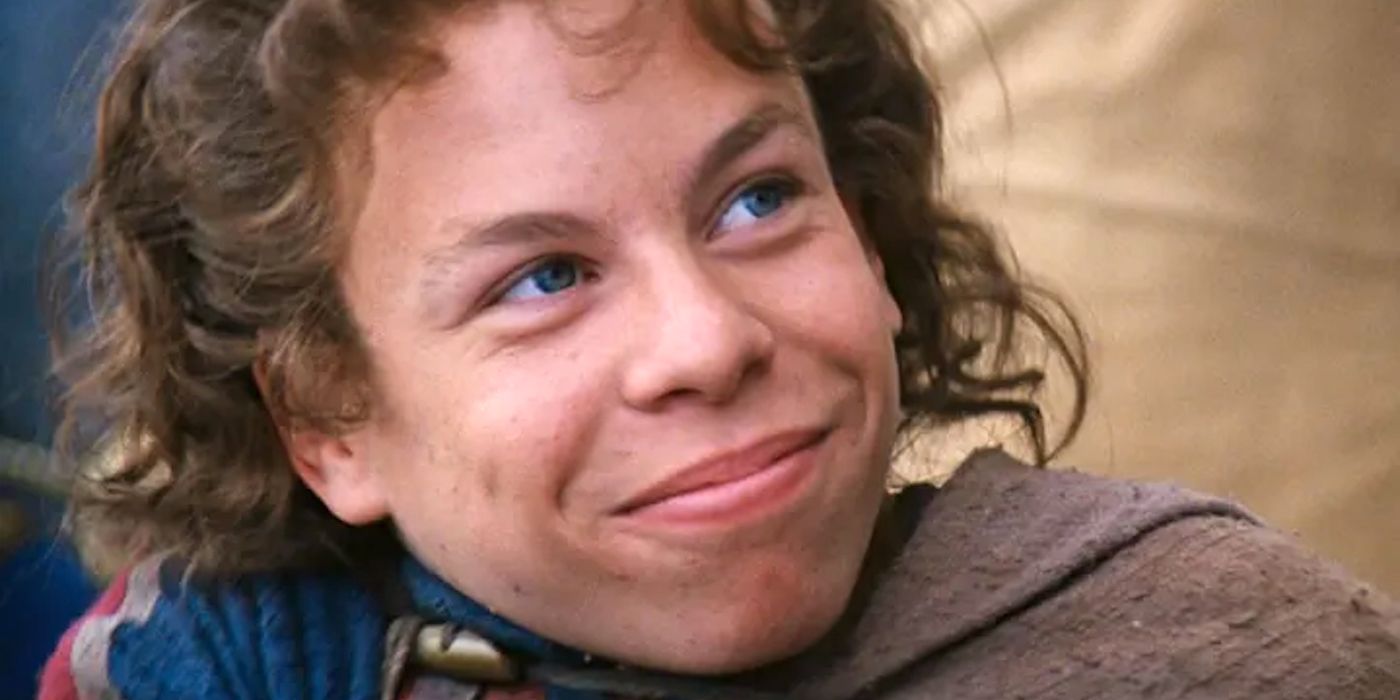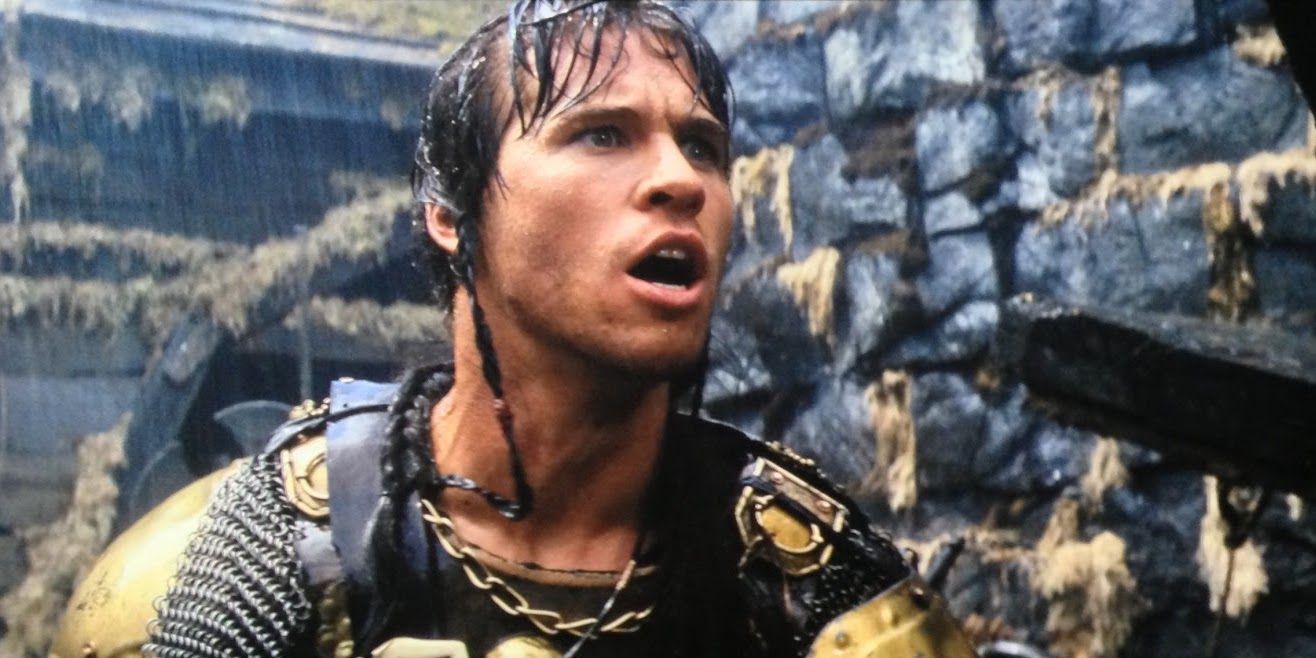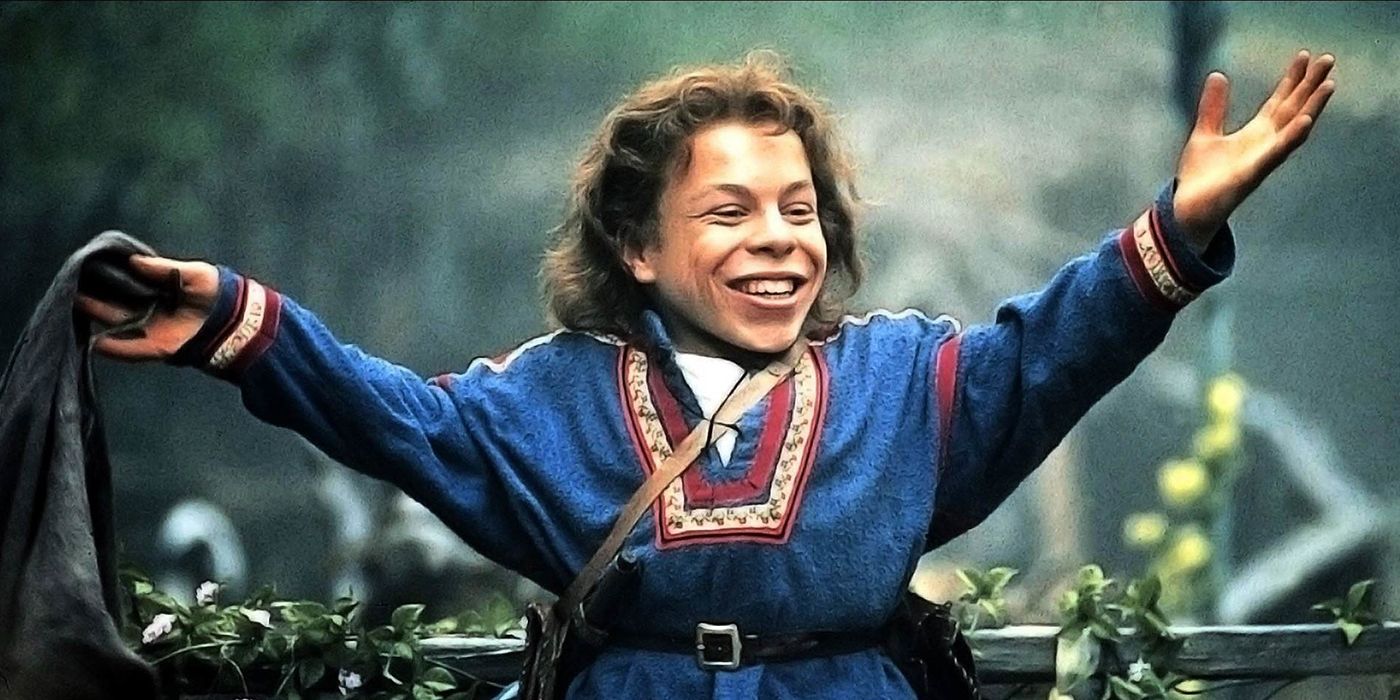There is something uniquely strange, for better and worse, about revisiting the 1988 fantasy adventure film Willow. It is one of those films that has an air of nostalgia around it for its effects and designs. They capture a different era that hadn’t yet fully taken the plunge into CGI spectacle. However, even as Willow is being reimagined as a new TV series, there is still no dancing around some of the original film's weaker elements. Save for a solid performance by a fresh-faced Warwick Davis and the aforementioned effects, it is a film that remains largely generic without leaving much of an impact of its own. The charm it has mostly comes from scattered small moments, though, the overall experience still remains far less than the sum of its parts.
Drawing from a story by George Lucas and directed by Ron Howard, Willow stars Davis as the titular Willow Ufgood. Living in a magical world, he is more than a bit ornery. When we first meet Willow he is an ordinary farmer who aspires to be a sorcerer. Unbeknownst to him, he is about to be thrust into a prophecy that will send him on a grand adventure. Essentially, there is a child that is foretold to be born with a special rune that will mark them as the one to bring down the evil sorceress Queen Bavmorda of Nockmaar (Jean Marsh) and her reign. Thus, she commands that all pregnant women be locked up to prevent this from happening. Despite this, the child is born and is smuggled out so as to escape the wrath of the queen. Wouldn’t you know it, this all-important child then washes up right with Willow who initially wants to send it further down the river. Instead, Willow ends up becoming the child's most important protector. What could possibly go wrong? As it turns out quite a lot. Willow will have to fight off the Queen's forces, including some murderous hounds, all while protecting this tiny infant.
Thus, a quest begins and we meet various other characters along the way. In particular, there is the mercenary Madmartigan (Val Kilmer) who assists our intrepid travelers on their mission. Like Davis, Kilmer similarly gives a committed performance and elevates the story in some key moments. From when we first meet him trapped in a cage, it is clear that he is having quite a bit of fun in navigating this fantasy world. He dances around slapstick-like and has a jolly time at his character’s expense. It feels like a more subversive element of the story that keeps us engaged and entertained. Unfortunately, the same can’t be said about the rest of the experience. Willow's story is an oddly tedious journey. Films that are more than two hours long need sparks in their stories so as not to feel monotonous and lose audience engagement. While there are brief flickers in Willow that prevent one from dismissing it out of hand entirely, it's hard to recommend watching this movie more than once as it increasingly drags the longer it goes on.
Considering Willow in relation to a film released one year earlier – The Princess Bride – is an interesting exercise. The Princess Bride remains joyous in all the ways that Willow does not. Interestingly enough, both films were shot by the same cinematographer, the late Adrian Biddle, and pack a similar visual fantasy aesthetic. Alas, Willow ends up feeling more like an insufficient imitation as opposed to a film that can stand on its own. There are certainly fun sequences, like when Willow is attacked in the woods by a miniature army or the final confrontation, though the road to get there is long. The story feels empty, like a checking off of fantasy boxes without the same sense of heart behind it. Still, the craft felt in many of the technical elements of the production are often remarkable.
Even when it doesn’t always hold up and you can see the cracks in how it is brought to life, Willow remains a charming artifact. The score by James Horner also does its darndest to drive the story forward, managing to be both somber in some moments and epic in others. When the music rises up, you may even get swept up in the adventure. One monologue given by Kilmer, while endlessly cheesy, is complimented well by this musical accompaniment – especially when he then takes off running and fighting before slipping in the snow. As they then make their harrowing escape on a sled with an army of men chasing after them on horses, it is hard not to smile and chuckle along with the spectacle. If the rest of the film wasn’t as lackluster, then it really could be rather good. Unfortunately, these isolated moments just can’t carry the rest of the experience over its many rough patches that are difficult to fully overlook.
This all may sound rather harsh for a frequently sweet fantasy film. The problem still remains that it repeatedly shoots itself in the foot by saddling the whimsy and wonder of the experience with a far too meandering story. The craft and characters are all there, though they are in service of a narrative that just isn’t up to snuff. Watching it decades later just hammers home how much of an achievement The Princess Bride remains and how Willow just can’t escape the long shadow it casts. Working further against it is that the still-outstanding Lord of the Rings film series would come out shortly after and set a new standard for what was possible in cinematic fantasy storytelling. That both have now gotten television adaptations that revisit the original material is interesting. If anything, revisiting Willow could allow for some improvements. However, as it stands now, the original film has its moments, but as a whole, offers a disappointing story that remains by the numbers as opposed to bold.
Rating: C+



